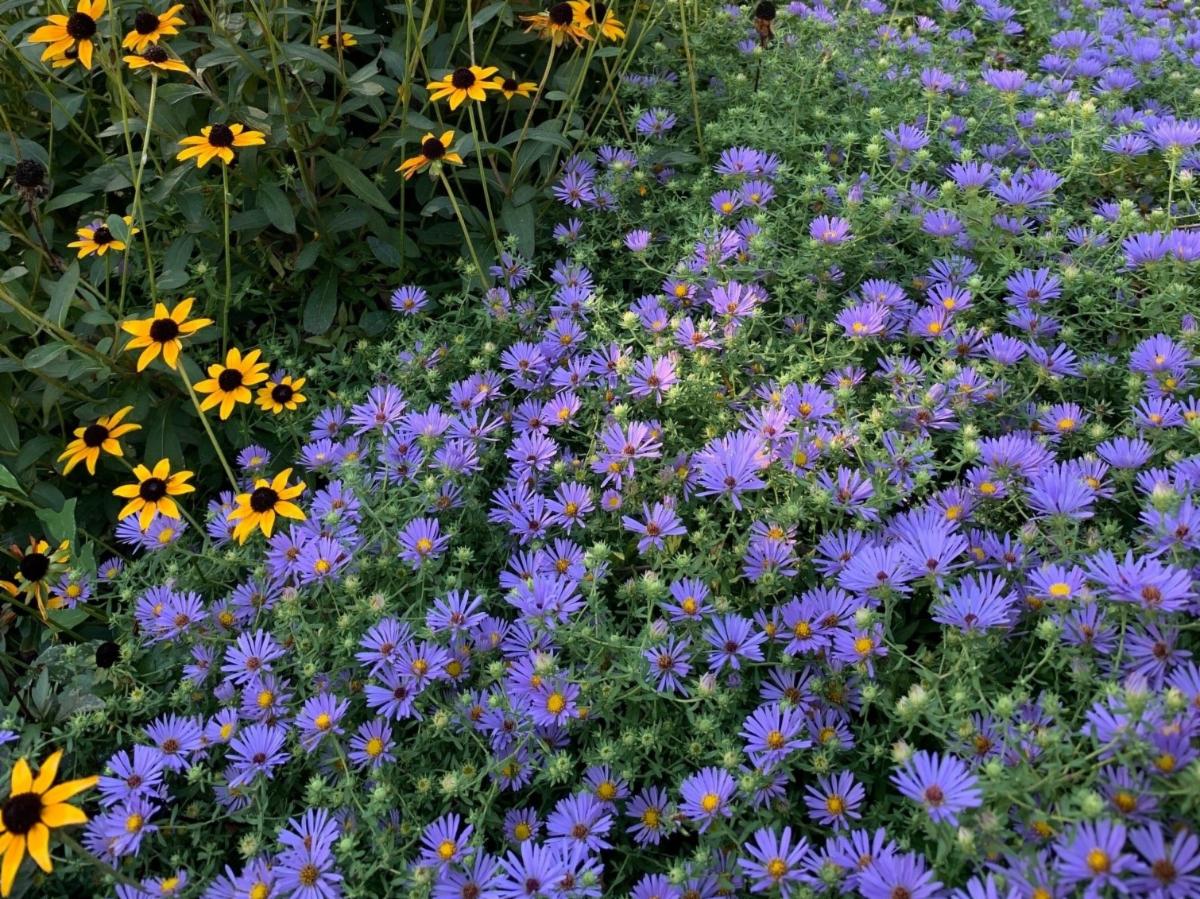Fall in the Perennial Garden: Favorite Plants & Best Practices
Don’t accept the rule that the best way to care for your home landscape in the fall is by making it cleaner than your kitchen or better organized than your garage. In the past, the standard approach would be to prune all evergreens into the shape of a meatball, chop all perennials after the first frost to within 3 inches of the ground, add mulch to perennial beds, and top it off by raking up all fallen leaves and placing them on the curb for pickup.
Go natural with your perennial flower beds! Take a fall break and let plant stems, stalks, and seed heads remain through the fall and winter seasons. Holding off on garden cutbacks until spring is a wonderful way to support wildlife. Whether it’s a large garden, like the ones I maintain at the National Museum of American History, or a small garden like yours (and mine!) at home, you can give nature a hand by going a little wild.
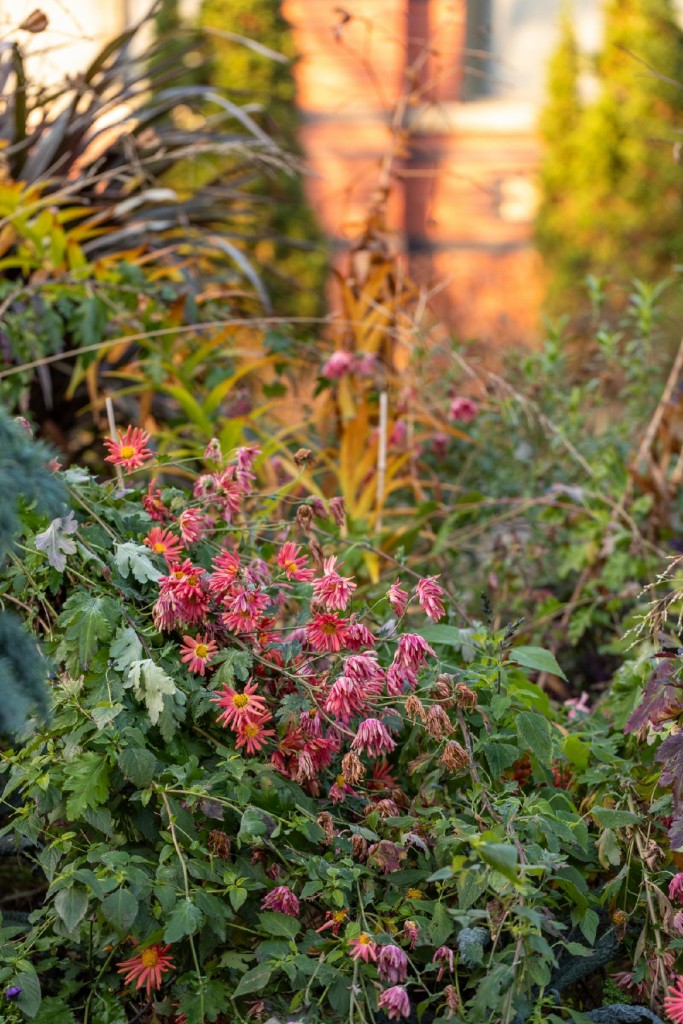
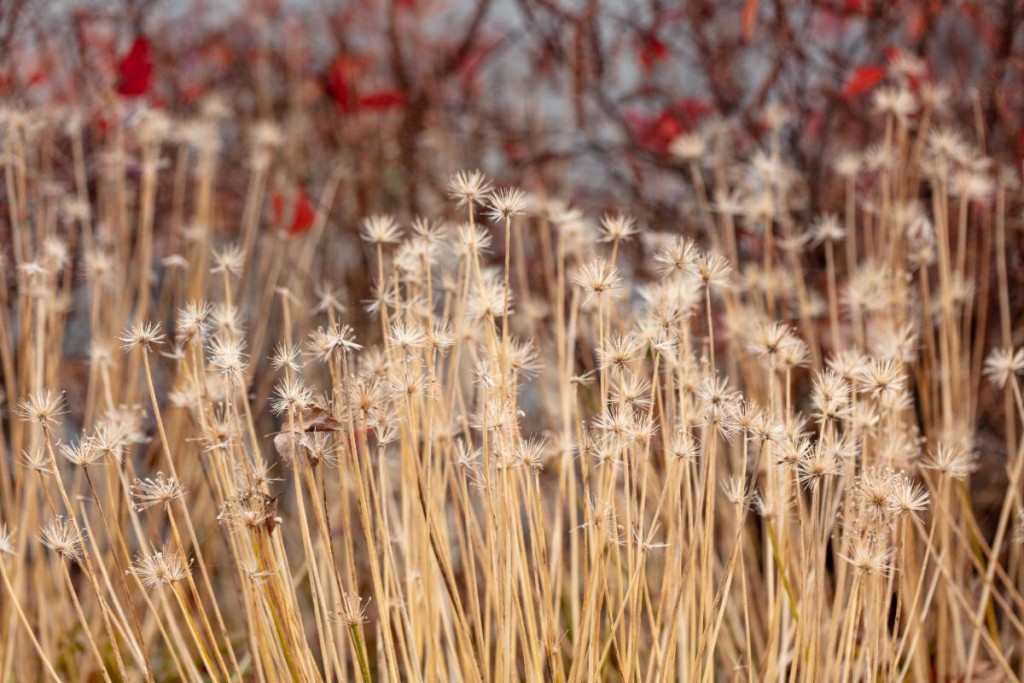
One of the most valuable things you can do to support pollinators and other invertebrates is to provide them with the winter cover they need. Delaying or even reducing your garden’s clean up until the spring is vital to birds and pollinators such as butterflies, bees, and others who call your garden home. I recommend delaying your big cleanup until mid-March to early April (depending on where you live in the U.S.). Pollinators need what every creature requires: regular food, access to shelter, and plenty of fresh water. The natural world provides all that is required. It is almost as if we need to do less and resist fighting the natural world.
Keep the stalks of perennials standing until mid-winter to leave the seeds as food for birds, then do an initial pass through the garden to cut them back to 9 to 12 inches high (snow permitting). During the March/April spring cleanup, cut dead stems down to the ground. Our native mason bee, for example, will nest in the hollow stems of native plants. Native bees are our chief pollinators, and as such play a critical role in our natural world. Provide pollinators with a winter habitat by not interrupting and damaging their delicate ecosystems by cleaning your garden with only humans in mind.
Many native bees spend the winter portion of their life cycle as an egg in underground burrows. By leaving fallen leaves atop perennial beds, we offer them a place to spend the winter with the loosely piled leaves acting as insulation. An application of 6 to 9 inches of leaves on top of herbaceous perennials is the right amount in my garden. Plus, it acts as great weed control.
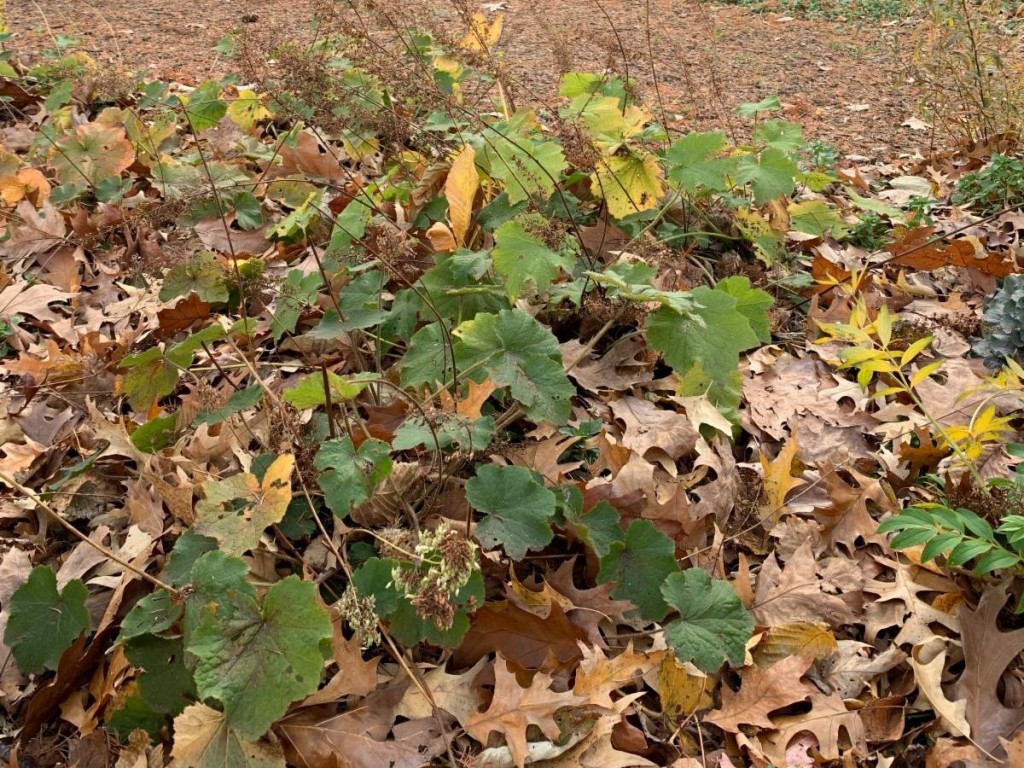
Not just bees, but lepidoptera (moths and butterflies), appreciate a layer of leaves amongst your garden plantings as an overwintering site. For instance, both Luna Moths and Eastern Tiger Swallowtails spend their winter hibernating amid leaf litter. If we remove all the detritus from the previous year’s growing season from our backyard, we eliminate the winter habitat for many native insects.
Leave fallen leaves in the garden as they are the best mulch and vital to our insect population, and never lose sight of the fact that abundance and diversity of insects is the best means of supporting the abundance and diversity of the bird population. The more insect-nurturing habitat we provide, the greater and more varied the bird population will be. Last season I raked the leaves from a nearby red oak off of my lawn and onto a nearby bed since leaves will kill a lawn if allowed to remain too long. For a more environmentally friendly yard, work toward converting areas of your lawn to perennial and shrub beds.

The surest, best, and certainly the simplest way to help pollinators and birds in your garden is to use plants that are native to your area or region and provide a long season of bloom and seed-set. Nectar and pollen are necessary for butterflies, native bees, and bumblebees to build food reserves before winter. Many birds do not migrate south. Native flower seed heads last through the winter and are an important food source, so don’t cut them down before the birds can get them. Insects that spend the winter in your garden also become a valuable food source for birds
Contrary to what you made have heard, fall is also a great time to plant; most garden centers are full of new plant material, the sun can still be very strong, the soil is nice and warm as it is still holding the heat from the long summer, and you can expect additional autumn rain. You could say that planting goes until the first frost; or if you can work the soil, you can plant. There are many fall-blooming native perennials including coneflowers, black-eyed Susan (my favorite), the very tall ironweed, the “pollinator magnet” goldenrod, and the best fall flowering perennial – asters. The aromatic aster (Symphyotrichum oblongifolium) has bursts of blooms as the chilly fall weather arrives, offering its flowers as a needed source of nectar for many insects as they get ready for winter.
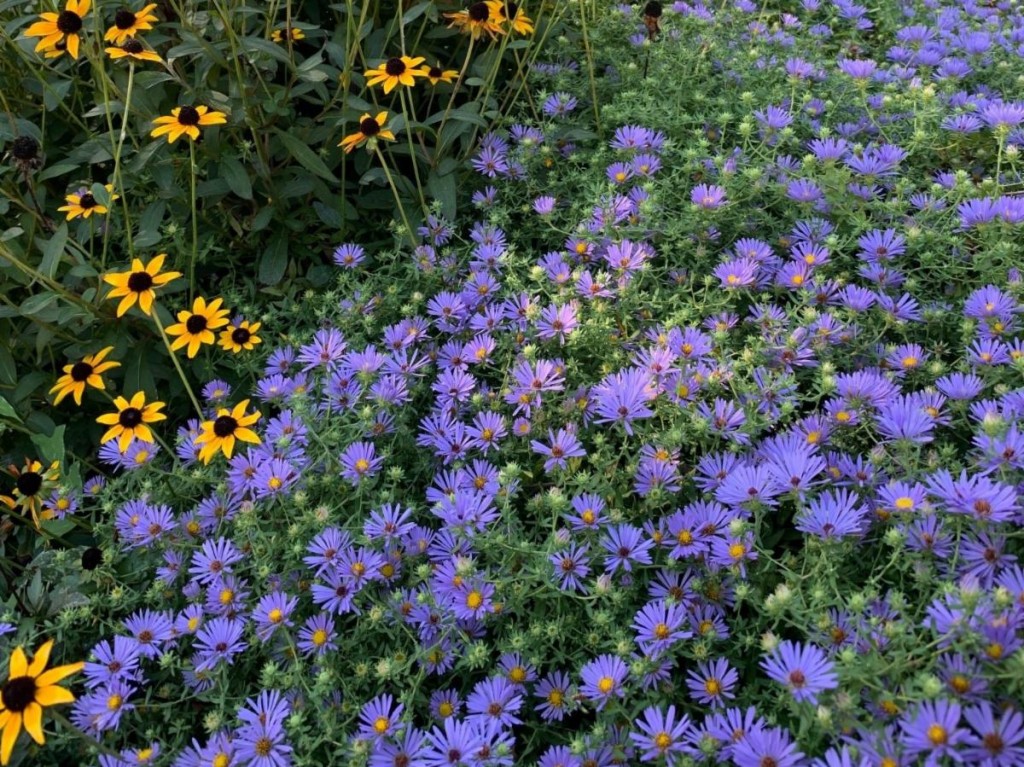
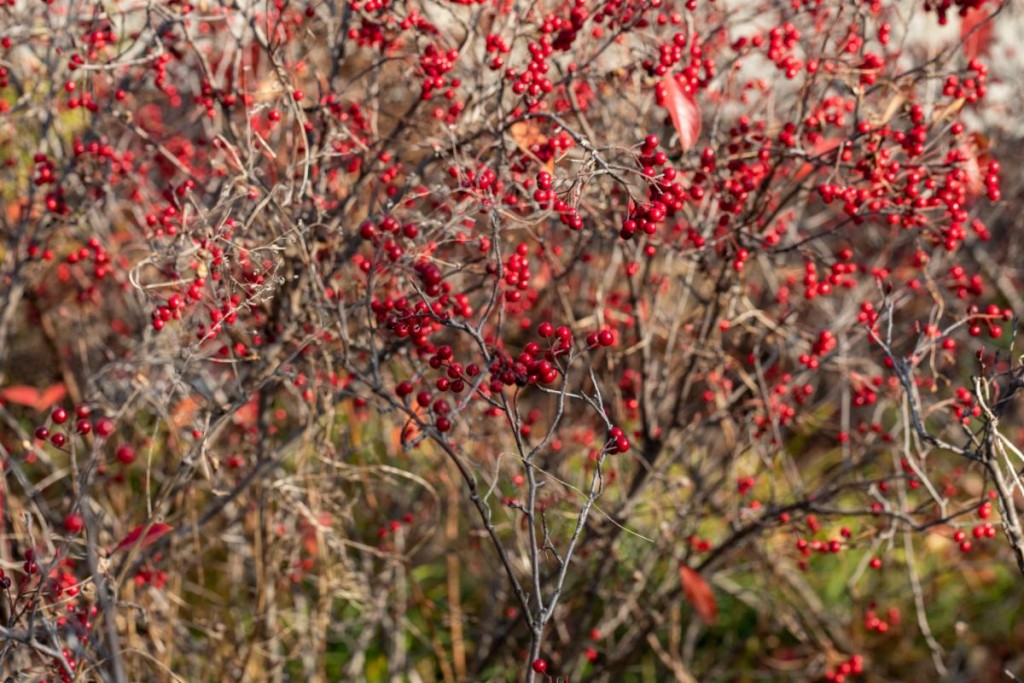
Asters – Both annual and perennial asters are prized for their ability to attract fall pollinators. While annual varieties typically produce larger, showier flowers, perennial species often produce stunning mass plantings. Asters provide a profusion of small flowers which open on long branches and range in color from white to deep purple. Like many native plants, perennial asters are exceptionally robust and resistant to disease and insect damage.
Solidago (Goldenrod) – Yet another native plant for fall pollinators, goldenrod is most commonly found growing in the borders of meadows and along roadsides. Though some may not consider this plant to have great ornamental use, it is of great value to late-season pollinators (and not the cause of fall allergies!).
Helianthus (Sunflowers) – Open-pollinated and heirloom varieties of sunflower are a great asset to fall flower gardens. In addition to their beauty, sunflowers sown in succession can yield valuable nectar for insects up until the arrival of the first frost. Easily grown from seed, these adaptable annuals also produce highly nutritious seeds for birds and other small backyard wildlife.
Two very simple things you can do this fall: plant native perennials, shrubs, and trees, and leave the leaves. These measures will provide habitat in the form of winter cover from fallen leaves and food for pollinators and birds from native flowers. If it is out of habit or guilt to stay busy and you need something to do then take the dog for a walk or tidy up the garage, just don’t rake the leaves!

